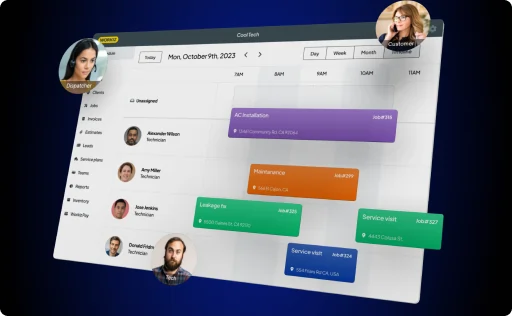The market is oversaturated, and with so many professionals vying for the attention of the same clients, it’s no wonder there’s a common misconception that lowering your home service rates will help you get more business. You might be telling yourself: “Maybe if we lower our prices, people will buy more.”
But what if I tell you that lowering your service rates is a bad idea?
In fact, by keeping your rates high and making sure customers understand what they’re getting in return for paying higher fees, you can significantly increase profits.
Sure, lowering your rates may get you more customers, but this isn’t always the case. It can be tempting to reduce your prices to attract more customers, but doing so may result in them labeling you as “cheap.” Meanwhile, you have the option of increasing your rates, thus attracting people who are willing to pay more for premium services.
Clients are willing to pay more.
According to Workiz, the leading field service management software, companies that charge above the average price are 40-90% more profitable. Yes, you read that correctly. For example, for the same type of job, locksmiths in California can charge anywhere between $104-$207. Assuming all else is equal (labor, equipment, etc.), the profit margin from the same job can be substantially different – solely based on how you decide to price your services and thus label your brand.
This is why we found that reducing your service rates will only attract customers looking for the cheapest home service company. They often don’t care about service quality and most likely will not rehire you in the future. Either way, these are not good prospects for your business. In an industry where word of mouth is a tremendous asset for business growth, you want to be mindful of the type of customers you attract.
Low-price service attracts low-quality customers
When you lower your prices, you’re signaling that you’re desperate for a job for your client base. As a result, this will be the first impression they have of you before you even set foot in their home – and such an impression won’t help you in establishing long-term clientele.
According to Research and Markets, online on-demand home services estimated at $281.9 billion in 2020 are projected to reach a revised size of $4.1 trillion by 2027. They are also expected to grow at a CAGR (compound annual growth rate) of 46.7% over the years 2020-2027. It means homeowners spend a lot of money on home services, yet it doesn’t seem like any company stands out from the competition because they are all the same. How do you want to stand out? As the cheapest option, or the most valuable one?

Clients don’t always demand a lower rate
Indeed, for most home service businesses, price is a crucial factor that consumers consider when choosing a provider. While there are other factors, such as the company’s reputation or whether it offers certain benefits like financing options, pricing still holds weight with most homeowners. By being one of many companies in this industry that charges less than average and by lowering your prices, you’ll get more business without a doubt. But would it make you more profitable?
The truth is, Americans will be likely to pay 17% more to do business with a company that has a reputation for excellent service. So, clients will want to buy from you not because you’re the cheapest, but because they already know they can trust you. Jeff Bezos, a guy who knows a thing or two about building a successful brand, summed it up perfectly:
“Your brand is what people say about you when you’re not in the room.“
Building a long-term clientele is essential
Let’s recap the points discussed:
- Lower prices attract lower-quality clients; you will only find people more concerned with price than results. These clients are not precisely FUN to work with either.
- Low prices don’t attract potential high-paying clients.
- Lower fees attract clients who push the boundaries. You might end up doing even more work than intended for less money than you could have charged. Yikes!
- Charging low fees means you get less commitment from your clients. Rather than being ‘all in,’ they’re instead, ‘half out.’ When it comes to clients, the more they pay, the more they’ll do to get results from your service!
As the sales guru, Jefferey Gilmore, states in his “Little Red Book of Selling:”
“Thirty to forty percent of all customers will buy price. That’s the bad news. The good news is that 60-70% of all customers will buy value if you provide it to them. The lowest price is the lowest profit. Every time you take a nickel off the top line price, you subtract that same nickel off the bottom line profit of the same sale. And here’s the reality about people who buy price only: Cheap bastards are also a pain in the ass.”
If you wonder how to increase your profit and score deals with more quality clientele, consider whether your prices are too low. You know what your services are worth. Raise your prices – you will soon get used to working with clients who appreciate your excellent services. What do you have to lose?










